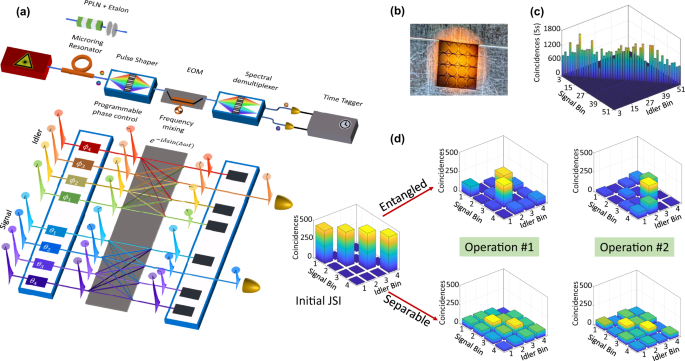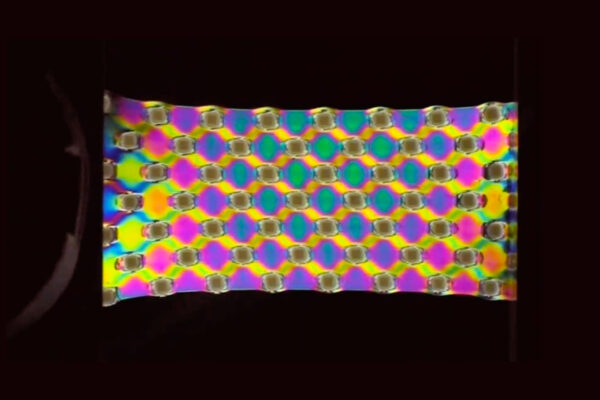2022-10-13 オークリッジ国立研究所(ORNL)
研究者らは、8レベルの量子ビットのもつれペアを完全に特性化し、64次元の量子空間を形成することに成功した(離散周波数モードとしてはこれまでの記録の4倍)。
研究者らはまず、EPFLが製造したマイクロリング共振器(非古典的な光を発生させるために設計された円形のオンチップ装置)にレーザーを照射して実験を行った。この強力な光源は、1平方ミリメートル(削った鉛筆の先に相当)の空間を占有し、研究チームは量子周波数コムという形で周波数ビン対を発生させることができた。
今回の実験では、電気光学位相変調器を用いて異なる周波数の光を混合し、パルス整形器を用いてこれらの周波数の位相を変化させることに成功した。
研究チームは、量子ディッツの応用に理想的な周波数相関を生み出す量子状態を逆算して推測するため、ベイズ推定という統計手法に基づくデータ解析ツールを開発し、ORNLでコンピューターシミュレーションを実施した。
<関連情報>
- https://www.ornl.gov/news/new-measurements-quantifying-qudits-provide-glimpse-quantum-future
- https://www.nature.com/articles/s41467-022-31639-z
高次元オンチップバイフォトン周波数コムのランダム測定によるベイズトモグラフィー Bayesian tomography of high-dimensional on-chip biphoton frequency combs with randomized measurements
Hsuan-Hao Lu,Karthik V. Myilswamy,Ryan S. Bennink,Suparna Seshadri,Mohammed S. Alshaykh,Junqiu Liu,Tobias J. Kippenberg,Daniel E. Leaird,Andrew M. Weiner & Joseph M. Lukens
Nature Communications Published:27 July 2022
DOI:https://doi.org/10.1038/s41467-022-31639-z

Abstract
Owing in large part to the advent of integrated biphoton frequency combs, recent years have witnessed increased attention to quantum information processing in the frequency domain for its inherent high dimensionality and entanglement compatible with fiber-optic networks. Quantum state tomography of such states, however, has required complex and precise engineering of active frequency mixing operations, which are difficult to scale. To address these limitations, we propose a solution that employs a pulse shaper and electro-optic phase modulator to perform random operations instead of mixing in a prescribed manner. We successfully verify the entanglement and reconstruct the full density matrix of biphoton frequency combs generated from an on-chip Si3N4 microring resonator in up to an 8 × 8-dimensional two-qudit Hilbert space, the highest dimension to date for frequency bins. More generally, our employed Bayesian statistical model can be tailored to a variety of quantum systems with restricted measurement capabilities, forming an opportunistic tomographic framework that utilizes all available data in an optimal way.


